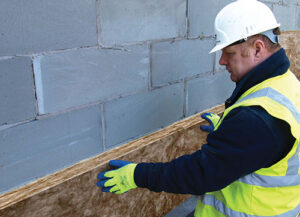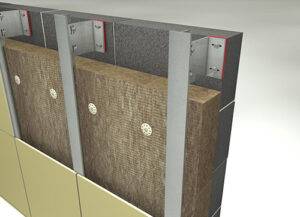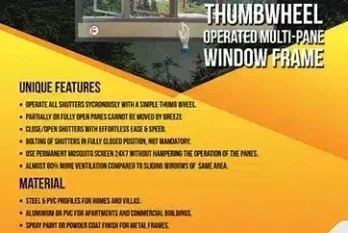The Price Of Under-Performance
The European Commission launched legal action against seven nations, including the U.K. in December, for failing to properly police emissions cheating exposed by the “dieselgate” scandal. In this scandal, car manufacturer Volkswagen (VW) admitted to falsely declare the fuel efficiency and emissions levels of millions of cars between 2009 and 2015. Shortly after news of the violation broke in October 2015, shares in VW plummeted 20%, with a further drop of 17% two days later. VW has since agreed to spend up to $16.5 billion in connection with the scandal, and in November 2016, they unveiled plans to cut 30,000 jobs by 2020 as the repercussions take hold. Although the scandal occurred in the automotive industry and not the construction industry, it raised concerns as to the potential implications of real performance not matching that of designed performance.
So, What About Our Buildings?
Delivering near-zero energy buildings that perform as expected in reality and not simply in design is essential to the entire building industry, from energy efficiency improvements to policy implementation. However, studies carried out by Knauf Insulation in conjunction with leading universities and industry bodies point out that there is often a significant gap between the real performance of our buildings and their designed performance.
Then Where Building Designers And Specifiers Start In Getting The Design As Accurate As Possible?
Arguably the first thing to do is to ensure that the designed energy performance of a building is calculated using the correct methodologies and to the relevant standards. And that starts with the U-values of the building fabric. Standards and regulations in the listed locations and regions were considered for each baseline insulation specification. For Dubai – there is Dubai Green Building Code; for Abu Dhabi – it is Abu Dhabi International Energy Code; for Doha – Karamah Regulations; for Riyadh – the draft Saudi Arabian Standard, SASO and where applicable, ASHRAE Energy Standard 90.1-2013 (for all buildings except low-rise residential buildings) and ASHRAE Energy Standard 90.2-2007 (for low-rise residential buildings); and for Muscat – ASHRAE Energy Standards 90.1 and 90.2 were considered as no local standards are in place..
Why U-Value Is Used?

The use of U-values allows for the comparison of different buildups for applications, so the insulating properties of a solid wall could be compared to that of a cavity wall, for example, or allow the comparison of two different types of insulation in different thicknesses. U-values are the basic building blocks on which the thermal performance of a building and its associated energy usage is established. A well-insulated building fabric is a key factor in enabling new buildings to deliver their specified energy efficiency.
It is the most accurate way of measuring the insulating properties of the application or material and building regulations/standards specify U-values which have to be achieved when building or refurbishing a building. For example, when building in Dubai, a roof in a villa has a recommended best starting point of a U-value of 0.30W/m2.K Without knowing the U-value of a wall or a floor or roof, you will not know how energy efficient the whole building will be. Before you start any building work, you should calculate the U-value as part of the design process to make sure that it meets or is lower than that of the specifications by building regulations/ standards.
For that reason, anyone compiling SAP or SBEM calculations need to be confident that the U-values they are relying on to establish building fabric performance is accurate and correct. It is simple to think that all U-value calculations are created equally and that it can be taken for granted and they are indeed correct and accurate. However, that may not always be the case. It is crucial to ensure that a U-value provided to a specifier or building designer has been consistently and correctly calculated by a technically competent person employing the correct methodology.
How U-Values Are Calculated?
To calculate the U-value, you have to start with the R-value or resistivity of the elements that make up the building element that you are trying to calculate the U-value for. The R-value refers to a material’s ability to resist heat transfer at a certain thickness – the higher the R-value the better the insulation material you are looking for. In its simplest form, a U-value is calculated by establishing the thermal resistance of each layer in the construction element and adding them together to provide a total resistance (TR) value. The U-value is calculated from the reciprocal of the combined resistances of the materials in the element, including any airspaces and surface resistance values.
Taking a standard timber frame wall as an example:
TR=Rse + Ra + Rb + Rc + Rd + Re + Rf + Rg + Rsi
- Rse is the external surface resistance
- Rsi is the internal surface resistance

This method of calculating U-values, however, does not allow for non-uniformities that exist in real constructions and therefore will not enable a realistic model to be calculated. These non-uniformities require factors to include an allowance for the effect of repeating thermal bridges, (e.g. timber studs in timber frame construction, mortar joints in a lightweight and aircrete masonry, or metal rails and clips in twin metal skin constructions), fasteners that penetrate the construction, and the possibility of the imperfection of fit that might allow air movement around insulation layers.
These methods are defined by international standards such as BS EN ISO 6946 (‘Building components and building elements – Thermal resistance and thermal transmittance – calculation method’), and BR443: 2006 (Conventions for U-value calculations). This is the basic formula, and by using this you could work out the U-value for a particular application. However, there are also other factors that need to be taken into account, including thermal bridging factors of fixings or stud work. When the combined U-value method is applied to the calculation of the U-value of this construction, it becomes 0.26W/m2K as opposed to 0.20W/m2K if the effect of the timber studs is ignored. In this calculation, the proportion of insulation replaced by timber is 15%.
This proportion is identified as the default timber fraction in BR443, and a level 1 air gap correction has been applied as per guidance given in BR 443:2006 and BS EN ISO 6946:2007 as the insulation layer is penetrated by timber studs. Air gap correction levels are adjusted according to the number of insulation layers, their continuity of contact at butted edge joints in the insulation, and the level of contact with the construction. Mineral wool insulation by way of its nature can be cut such that it fits “snugly” in-between studs and makes good contact with the construction.
A Fundamental Building Block
Clearly, the accurate calculation of U-value requires detailed knowledge of product characteristics, calculation methodologies & standards, and construction techniques. The accurate calculation of U-values is a fundamental building block in the development of whole-building energy models and building regulations submissions.
U-Value & Condensation Calculation Competency Scheme

This ever-increasing importance of consistent and correctly compiled U-value calculations was recognised by the British Board of Agrèment and the Thermal Insulation Manufacturers and Suppliers Association (TIMSA) in 2010 leading to the creation of an industry-leading U-value and Condensation Calculation Competency Scheme. The primary purpose of the scheme is to promote and assist accurate, objective, and consistent calculation of U-values and condensation calculations within the construction industry. Membership of the U-value Calculation Competency Scheme provides specifiers and building designers with confidence that the calculations supplied to them are accurately and consistently modelled and is in-line with all the relevant industry standards.
Achieving Competency Status
In order to achieve competency status, a company must have demonstrated appropriate technical competency and have in place a wide range of procedural controls to ensure that the U-value and condensation calculations they supply are accurate and consistent and that there is a clear and comprehensive audit trail in place.
How Do Specifiers And Building Designers Ensure The U-Value They Have Been Provided Is Accurate?
Recent research suggests that the first port of call for a U-value calculation is to use an online U-value calculator. However, to be assured that the calculations supplied are accurately and consistently modelled in-line with all the relevant industry standards, specifiers and building designers should request that the U-values they are provided with, are calculated by a member of the BBA/TIMSA U-value Calculation Competency Scheme. This gives the designer a reassurance that the calculation is provided after taking into account all non-uniformities and factors which may affect the thermal transmittance of the building element in question. Yes, there is still a long way to go in order to ensure that the real performance of the building matches the designed performance, but using a U-value in which the designer has confidence that can often be the starting point for giving a better chance of the success.














